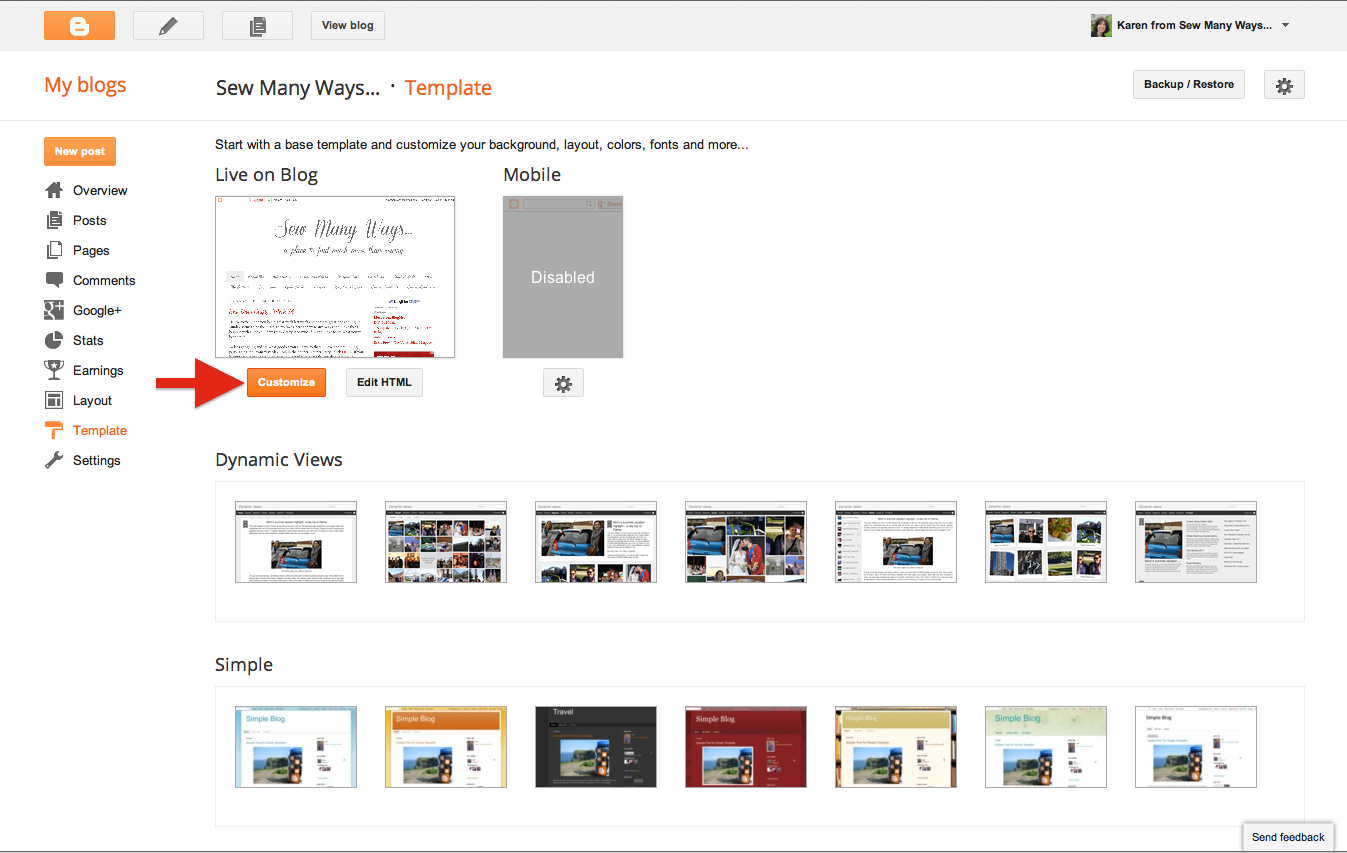Using stunning visuals can elevate your blog or website from ordinary to extraordinary! One of the best resources for high-quality images is iStock. In this post, we’ll explore how to effectively use iStock photos as headers for your blogs and websites. With the right visuals, you can capture your audience's attention, convey your message, and make your content more engaging. So, let’s dive into the importance of visuals and how they can transform your online presence!
Understanding the Importance of Visuals in Blogging

Have you ever heard the phrase, “A picture is worth a thousand words”? Well, it’s especially true in the world of blogging. Visuals play a critical role in how your audience interacts with your content. Here’s why they matter:
- Grab Attention: In today’s fast-paced online environment, readers often skim content. A captivating header image from iStock can instantly draw them in and encourage them to read further.
- Enhance Understanding: Sometimes, words alone can’t convey complex ideas. A well-chosen image can illustrate a point effectively, helping your audience grasp the concept quickly.
- Boost Engagement: Posts with images tend to have higher engagement rates. Readers are more likely to share, comment on, and interact with visually appealing content.
- Establish Branding: Consistent use of visuals that align with your brand can create a cohesive look and feel for your blog or website. This builds recognition and trust with your audience.
So, how do you choose the right iStock photos for your headers? Here are a few tips:
- Relevance: Ensure the image you select aligns with your blog's topic. For example, if you're writing about travel, choose vibrant landscapes or iconic landmarks.
- Quality: Always opt for high-resolution images. iStock offers a wide array of professional photos that can enhance your blog’s visual appeal.
- Color Scheme: Pick images that complement your website's color palette. This creates a harmonious look and keeps your readers focused on the content.
In conclusion, visuals are not just an accessory; they are a vital part of your blogging strategy. By incorporating iStock photos as headers, you can increase your content’s attractiveness, clarity, and overall effectiveness. So, next time you’re crafting a blog post, remember the power of visuals and make them work for you!
Also Read This: Does iStock Signature 50 Include Video Content? Understanding Subscription Features
3. Choosing the Right iStock Photos for Your Headers
When it comes to selecting the perfect iStock photo for your blog or website header, it’s crucial to think about the message you want to convey. A header is often the first thing visitors see, so it needs to be impactful and relevant. Here are some tips to help you choose wisely:
- Match Your Brand Identity: Ensure the photo resonates with your brand’s values and aesthetics. For example, if you run a wellness blog, consider soft, serene images that evoke calmness.
- Color Palette: Stick to a color scheme that complements your website. If your site has a lot of blues and greens, opt for images with similar tones to create visual harmony.
- Focus on Emotion: Photos that evoke emotion can create a stronger connection with your audience. Pictures of happy people or stunning landscapes can draw readers in.
- Consider Composition: Look for images with space for text. A cluttered photo can make it hard to overlay your blog title or tagline. Aim for images with negative space that won’t overwhelm the text.
- Relevance to Content: Choose images that align with the blog post's topic. If you’re writing about travel, use a stunning landscape or a vibrant city scene.
Remember, your choice should not only captivate but also communicate the essence of what your blog is about. Take your time to browse through various options, and don’t hesitate to experiment with different styles until you find the one that feels just right!
Also Read This: How to Qualify for the Signature Collection on iStock
4. How to Download and Use iStock Photos
Now that you’ve selected the perfect photo for your header, it’s time to download and implement it on your blog or website. Here’s a straightforward guide to get you started:
- Create an iStock Account: If you haven’t already, sign up for a free iStock account. This will allow you to purchase and download images easily.
- Search for Photos: Use specific keywords related to your blog topic to find the most relevant images. Filters can also help you narrow down your search by orientation, size, and color.
- Select Your Image: Once you find a photo you love, click on it to view larger versions. Make sure it meets your resolution needs. For headers, a higher resolution is typically better.
- Add to Cart: If you’re satisfied with your selection, add the photo to your cart. Review any licenses available, as this can affect how you use the image.
- Download the Photo: After completing your purchase, you’ll be prompted to download the image. Choose the appropriate size and format (JPEG or PNG are common) for your needs.
- Upload to Your Blog or Website: Head to your blog’s dashboard. If you’re using platforms like WordPress, go to the media library and upload your newly downloaded iStock photo. Once uploaded, you can set it as your header image easily.
And that’s it! By following these steps, you can seamlessly incorporate stunning iStock photos into your blog or website headers, making your content more engaging and visually appealing.
Also Read This: Are iStock Images Copyright-Free? What Every User Needs to Know
5. Best Practices for Implementing Header Images
When it comes to implementing header images from iStock in your blogs and websites, a few best practices can make all the difference. Here’s how to ensure your headers not only look great but also serve their purpose effectively.
1. Choose Relevant Images: Always select images that are relevant to your content. If you’re writing a blog about healthy eating, for instance, an image of fresh fruits or a beautiful salad as your header will resonate with your audience. This connection between the image and the text can enhance user engagement.
2. Maintain Consistency: Consistency is key in branding. Use a similar style or color palette for your header images across different posts. This helps in creating a cohesive look for your website and reinforces your brand identity. If your blog has a minimalistic style, opt for clean, simple images without too much clutter.
3. Optimize Image Size: Large images can slow down your website, affecting user experience. Make sure to resize your images appropriately. A good rule of thumb is to keep header images under 1200 pixels wide. This size balances clarity and loading speed.
4. Test Different Formats: Don’t hesitate to experiment with different image formats. Sometimes, a graphic or an illustration can be more appealing than a photo. Tools like Canva or Adobe Spark can help you create custom graphics that fit your blog’s personality.
5. Use High-Quality Images: Quality matters! Always opt for high-resolution images from iStock. Blurry or pixelated images can make your site look unprofessional and can deter visitors. High-quality visuals create a positive impression and keep readers coming back.
By following these best practices, you ensure that your header images not only enhance the aesthetic appeal of your site but also contribute to an engaging user experience.
Also Read This: What Sells Best on iStock? Maximizing Earnings as a Contributor
6. Optimizing Header Images for SEO
Optimizing your header images for SEO is crucial for improving your website’s visibility in search engines. Here’s how to make your iStock images work harder for you:
1. Use Descriptive Filenames: Before uploading your header image, rename the file to something descriptive. Instead of "IMG_1234.jpg," use "fresh-salad-header.jpg." This makes it easier for search engines to understand what the image is about.
2. Implement Alt Text: Alt text is an essential element for both SEO and accessibility. Write a clear and concise description of the image in the alt attribute. For example, "A vibrant salad bowl filled with fresh vegetables" helps search engines index your image while providing context for visually impaired users.
3. Leverage Image Sitemaps: Including your images in your XML sitemap can help search engines discover them more easily. Ensure that your sitemap is updated regularly and includes all your significant images, particularly those used as headers.
4. Compress Images: Large image files can slow down your site, negatively impacting SEO. Use tools like TinyPNG or ImageOptim to compress your images without sacrificing quality. This will help maintain fast loading times, which is a critical SEO factor.
5. Monitor Performance: After implementing your images, keep an eye on their performance in search results. Tools like Google Search Console can provide insights into how your images are ranking and whether they’re driving traffic to your site. Adjust your strategy based on what the data tells you!
By optimizing your header images for SEO, you not only enhance your site's performance but also increase your chances of attracting more visitors. It’s all about working smarter, not harder!
Also Read This: How to Download Images for Comps in iStock: A Comprehensive Tutorial
7. Examples of Effective Header Images
Choosing the right header image can significantly impact how your blog or website is perceived. Let's explore some examples that effectively grab attention and convey the message of the content. Here are a few categories of images that work well:
- Nature and Landscapes: Images of serene landscapes or vibrant nature scenes can create a calming effect. For instance, if you’re writing about wellness or travel, a breathtaking mountain range or a tranquil beach can set the perfect tone.
- People in Action: Header images featuring people engaged in activities relevant to your content can create a personal connection. For example, if your blog focuses on fitness, an image of someone running or practicing yoga can resonate well with your audience.
- Abstract Designs: Sometimes, a more artistic approach works. Abstract images with colors that match your website’s palette can create an intriguing header. They often add a modern touch and can be particularly effective for tech or design blogs.
- Product Shots: If you’re running an e-commerce site, a high-quality image of your product as a header can attract customers. Think about lifestyle shots that show the product in use, like a cozy living room with your furniture pieces showcased.
- Infographics: Visual representations of data or statistics can serve as an effective header. For a blog post on industry trends, an infographic can succinctly convey key information while looking visually appealing.
For example, a tech blog could utilize a header image of a sleek gadget in a stylish workspace, immediately signaling its focus on innovation and modernity. In contrast, a food blog might benefit from a vibrant image of a beautifully plated dish, enticing readers and setting their expectations for delicious content.
Ultimately, the key is to ensure your header image not only looks fantastic but also aligns with the message of your content. A mismatch can confuse readers and may even deter them from engaging further with your site.
8. Conclusion
Using iStock photos as headers for your blogs and websites is a fantastic way to enhance visual appeal and engage your audience. By carefully selecting images that resonate with your content, you can create an inviting atmosphere that encourages readers to explore more.
Here’s a quick recap of what we discussed:
- Understand the importance of header images in setting the tone for your blog or website.
- Utilize iStock’s vast library to find images that align with your content and audience.
- Experiment with different styles, from landscapes to abstract designs, to see what resonates best with your readers.
- Always ensure that your header images are high-quality and optimized for web use to maintain fast loading times.
As you continue to craft your online presence, remember that a compelling header image can make all the difference. So, get creative and let those visuals work their magic!
 admin
admin








